Structural Health Monitoring from the Cloud
Posted on August 26, 2022
How global warming is impacting existing infrastructures and what we can do about it?
Global warming can be defined as the rise of the average global temperature. Over the last three decades we have witnessed a constant increase in the global temperature of land and ocean which has caused changes in atmospheric moisture and rainfall. This condition is causing extreme weather events, more storm, more intense rainfall, and sea level rise. These environmental changes also have a great impact on our infrastructures. Decreased and increased precipitation, higher temperature and higher sea levels are all affecting buildings, transportation systems, and vital infrastructures for water and energy supply in different ways, accelerating their deterioration and threatening our safety.
All structures have a certain design life for which they were conceived, designed, and then built. Until a few years ago the fact that their life had a limit was not very clear. Because of that many structures all over the world have been suffering from deterioration due to inadequate maintenance, which has been worsened by global warming. Extreme weather events are, in fact, shortening our infrastructure design life even more, leading to potential great disruption and damage to our economy and to citizens’ life.
Transportation systems ensure efficient distribution of energy, food and trade, and they are essential for workers and consumers to access jobs and markets, while energy production and distribution facilities are essential for electricity provision of a region. The damage to these infrastructures due to climate change can create significant problems for our cities.
Transportation systems that provide energy distribution and commerce, similar to an icecasino that provides players with access to a variety of games and entertainment. Just as efficient energy distribution is important for regional development, online casino bonuses and promotions can stimulate player interest and provide additional benefits. A variety of casino games such as poker, slots and roulette, similar to power generation and distribution facilities, can meet the different needs of players and contribute to the growth of this industry segment.
The following are a few of the effects that climate change can have on some transportation systems.
| Climate Change | Roads | Railways | Bridges |
|---|---|---|---|
| Temperature change | Rapid asphalt deterioration and substructure damage | Expansion and buckling of railway tracks joints | Accelerated material degradation |
| Precipitation change | Accelerated erosion and construction damage, and increased flooding | Accelerated erosion and construction damage, and increased flooding | Higher bridge scour and accelerated erosion and construction damage |
In order to know how infrastructures are reacting to climate change, they must be monitored regularly. Structural Health Monitoring (SHM) is the process of determining the condition of a structure to identify variations in its response to stress or to other factor and to plan the type of maintenance needed, which helps improve their service life.
However, Structural Health Monitoring not always implemented. The truth is that traditional SHM also comes with some issues that have limited its use in real engineering practice, such as the high cost of the systems, the complex installations (due to wired sensors) and the difficult data interpretation. Smart SHM is offering a solution to all those problems: let’s see how.
Smart SHM as a strategy to help reduce the impact of global warming on infrastructures
Now more than ever we need an easy and accessible way to monitor the health of our infrastructures in order to assess their deterioration, to understand how they are affected by drastic environmental changes and to plan effective maintenance before it is too late. Thanks to the recent advancements in technology and to the Internet of Things (IoT), all that is possible! We now have access to smart devices that are disrupting the industry, allowing infrastructure owners to remotely monitor the deterioration and the overall health of structures in a quick, cost-effective and easy way.
Smart SHM allows infrastructure owners to overcome the problems related to traditional monitoring. That enables them to implement a more efficient and continuous monitoring strategy that can promptly identify the effect of climate change on infrastructures in order to plan more effective maintenance.
The following are the main advantages that come with Smart Structural Health Monitoring, compared to traditional monitoring:
- Low installation, management, and maintenance costs: Smart SHM monitoring systems drastically reduce all costs, if compared to the traditional ones, thanks to the use of wireless technology, and installation is also simple, fast and cheap since wired devices are no longer required. A wireless system allows infrastructure owners to remotely manage the sensors, reducing the need to go frequently on site. Maintenance is also extremely simplified because devices are low-power and battery-powered, with batteries that last around 18/24 months from installation.
- Easy handling of large amount of data: New technologies offer a reliable and optimized network that enables owners to send, store and manage large amounts of data, always available and downloadable from a Cloud platform, facilitating the whole monitoring process.
- Cost-effective and simple software to access and process data: While the traditional SHM software is usually complex and expensive, often requiring third-party technology, thanks to the IoT, Structural Monitoring systems can now be easily connected to an online Cloud platform that has already everything needed: data collected by the sensors is processed there and can be accessed in real time for effective and remote monitoring.
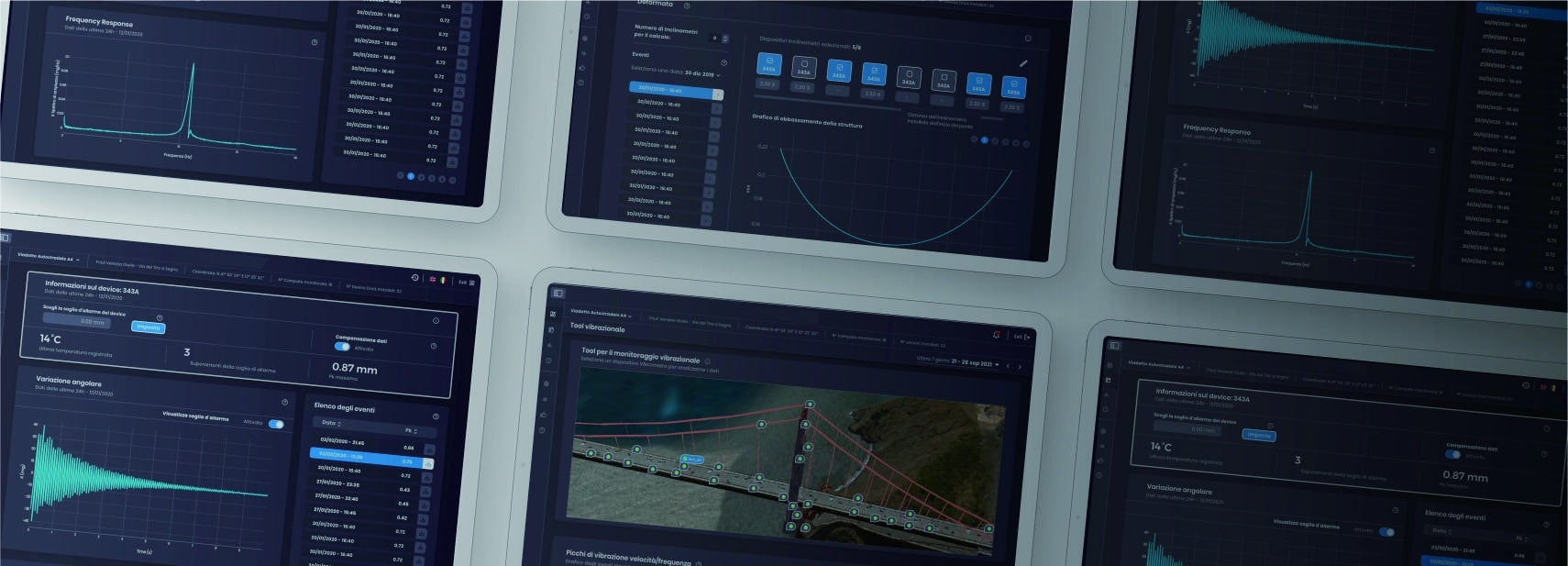
Figure 1. Example of a Cloud Platform for remote and real-time monitoring of a bridge
- Precise and easy long-term monitoring: The most common approach in the monitoring world is often to plan a one-off monitoring session and to extrapolate the modal behavior of the structure solely during that period of time. That approach is quite poor because it extrapolates the photograph of the structure only at that precise moment without considering its evolution over time. Newest SHM systems allow infrastructure workers to have daily measurement sessions, which result in more precise modal parameters, very important to better understand the overall health of the structure in the long term.
- Easy calculation of the modal parameters of a structure: The traditional SHM software is quite complex and it often requires the intervention of a technician that, in order to perform modal analysis of the structure in the long term, would need to be on site on a daily basis. On the contrary, smart monitoring systems have an algorithm designed specifically for modal analysis that extrapolate frequencies and modal shapes of the structure in a completely automatic way. The algorithm uses techniques known in the world of Machine Learning and Data Science to identify vibrational modes and isolate any calculation anomalies or possible structural damage.
- Proactive maintenance: Smart SHM systems are a step forward towards proactive maintenance. In fact, most current maintenance protocols are based on reactive strategy; that means that interventions and repairs are performed when failure has already occurred. That can not only be a more expensive option for the structure owner, but it can also be more dangerous for everyone. The repair solutions done at that stage are also usually not as effective, increasing the risk of another failure.
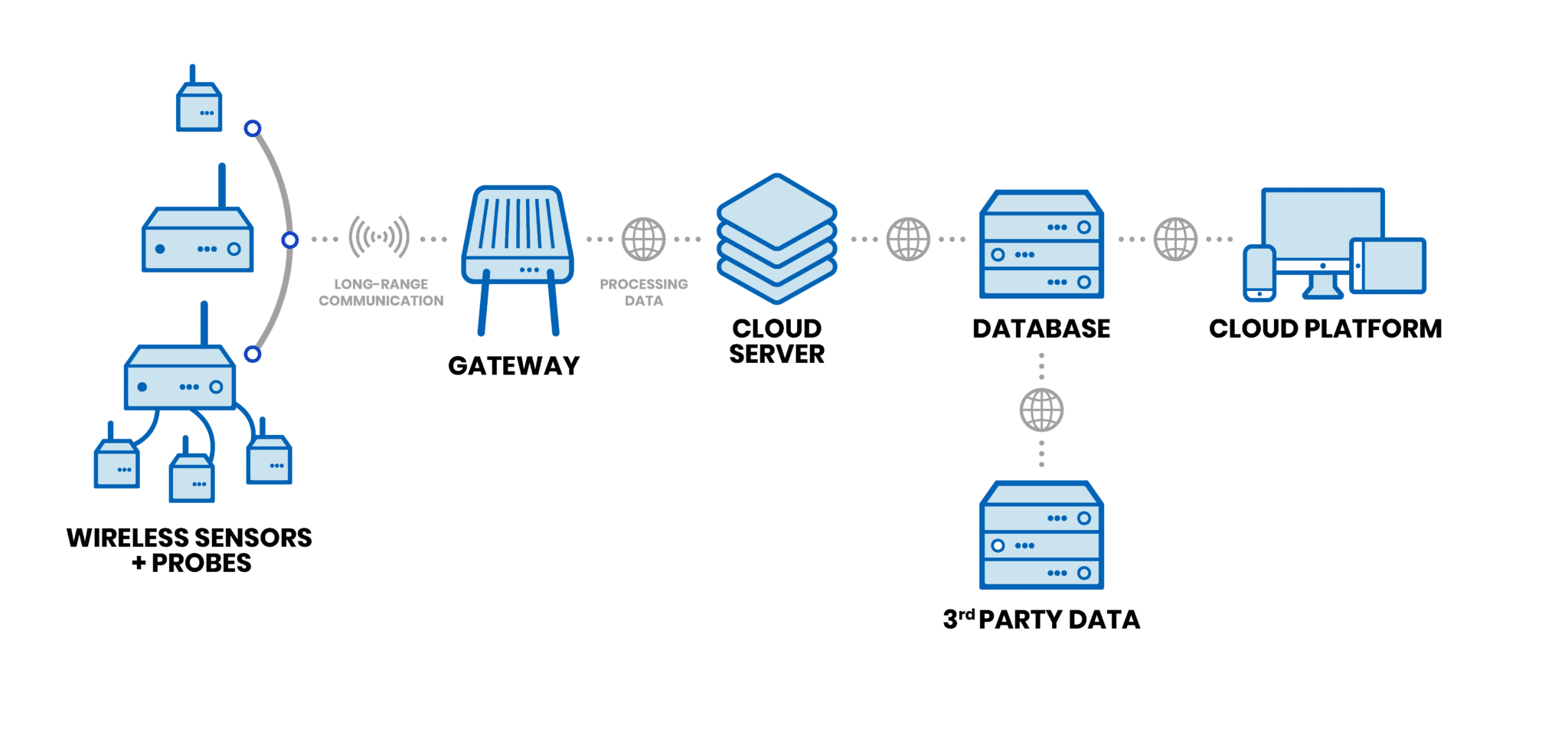
Figure 2. Example of a Smart SHM system
Case study
The Vespucci bridge is one of the central bridges of Florence that crosses the Arno River, joining San Frediano district with the rest of the city. It has three spans, with an overall length of 162m. Designed by Riccardo Morandi and built between 1954-1957, it has been suffering from deterioration of the concrete, accelerated by climate change. The deterioration has particularly affected the two piers, due to the erosion of the riverbed caused by water and it requires continuous and real-time monitoring.
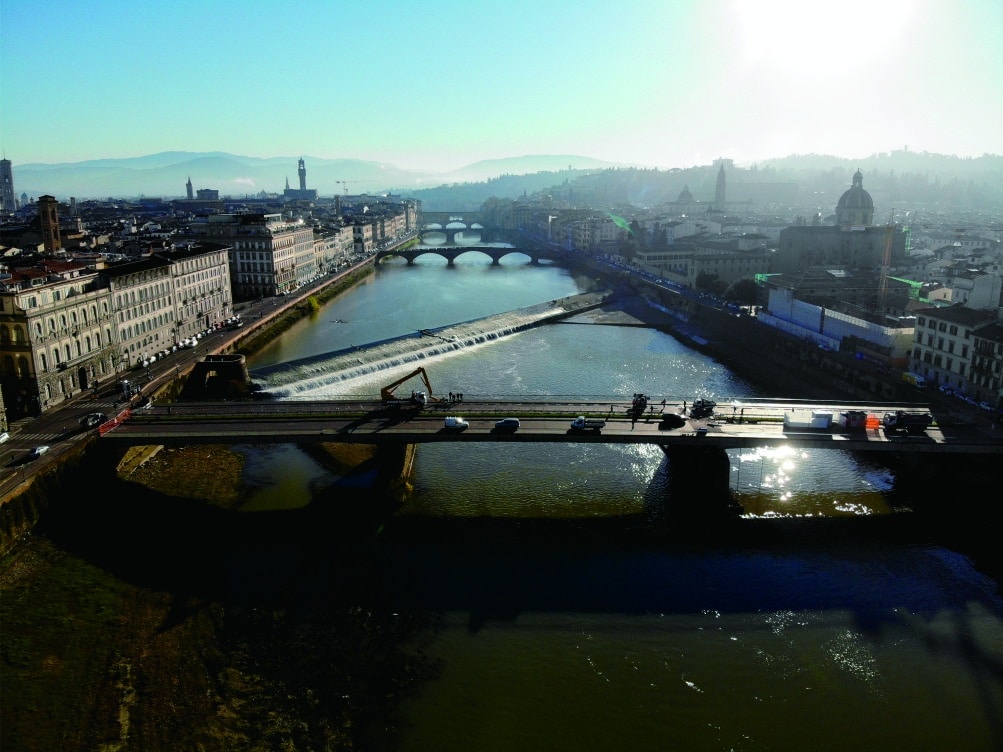
Figure 3. Vespucci bridge
In order to meet those requirements, a smart monitoring system has been set up on place, using the following sensors:
- dynamic displacement sensors positioned at the centre of each span measure the maximum oscillation
- triaxial accelerometers positioned on the 2 stacks measure the acceleration on the 3 axes, caused by external events such as traffic and works, with a high resolution and reliability.
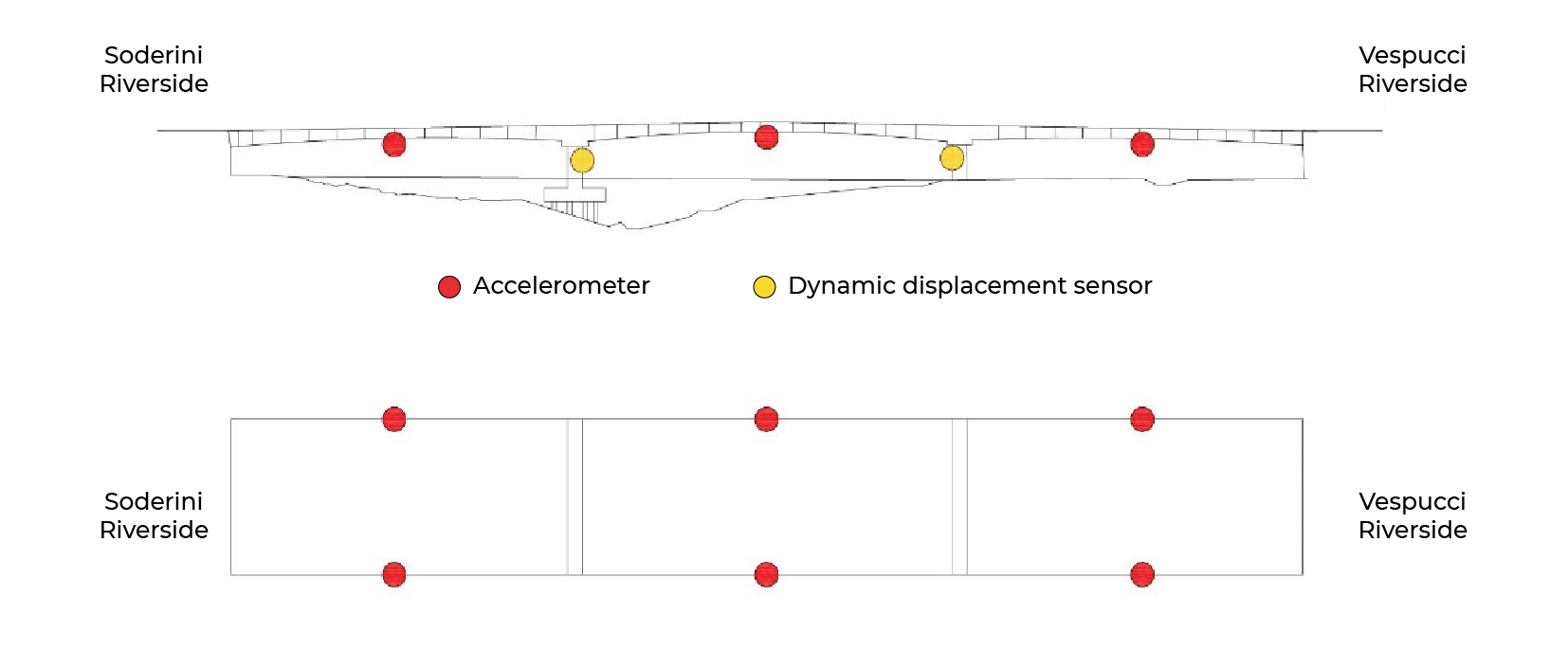
Figure 4. Monitoring system of the Vespucci bridge
Thanks to a monitoring system that leverages the latest IoT technologies, the city of Florence can continuously analyse how climate change and other factors are affecting the deterioration of the bridge, so as to plan promptly maintenance.
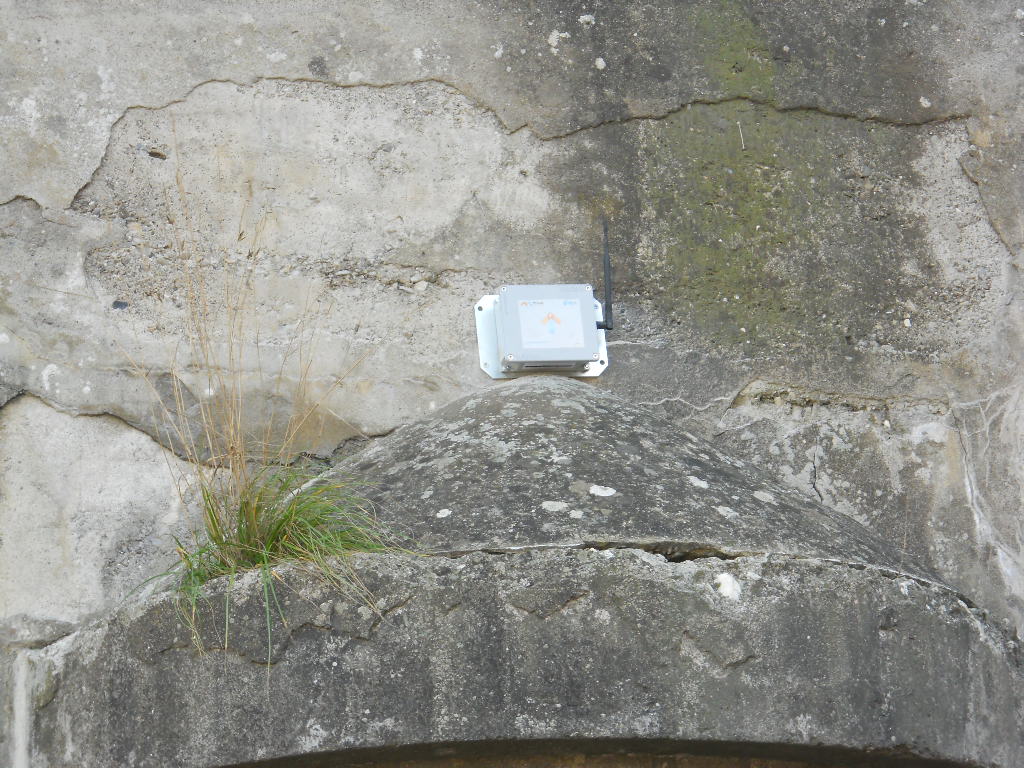
Figure 5. Dynamic displacement sensor on the bridge
In a Nutshell
To summarize, Structural Health Monitoring is an important tool that helps:
- detect problems at an early stage
- enable a proactive response
- design cost-effective solutions
- optimize maintenance process
- avoid breakdowns
- boost the structure lifetime
- improve safety
- save lives
Thanks to recent advancements in technology and to the development of Internet of Things (IoT) devices, all SHM systems can now be:
- cost-effective
- wireless
- low power
- easy to install
- easy to read thanks to data processing platforms
- connected to a cloud platform that gives access to data remotely
Adopting Smart Structural Health Monitoring systems can deliver a strong return both by reducing costs from climate-related damage to infrastructures and by avoiding significant knock-on effects in wider society.
If you are working on any projects that could benefit from SHM, please reach out to our regional office via our Contact Us page.
To get regular updates on news and events, please follow us on our LinkedIn page.
Return to Main News Page

